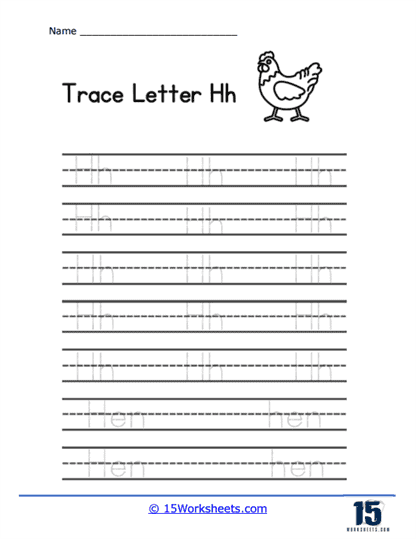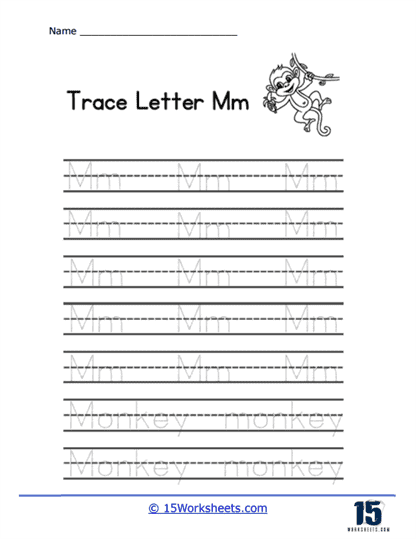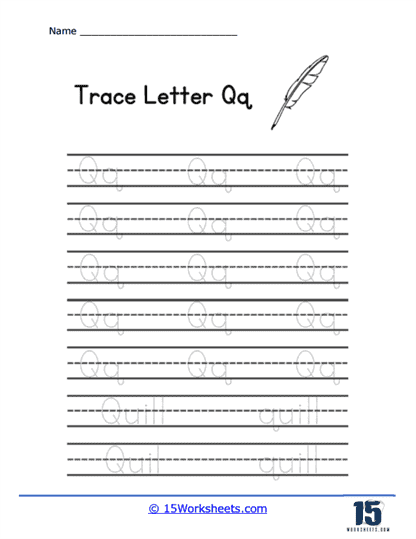Block Style Print Worksheets
All About These 15 Worksheets
Block Style Print handwriting worksheets offer a structured and effective way for students to develop and refine their handwriting skills. Through a variety of exercises, these worksheets cater to different stages of learning, ensuring a gradual and comprehensive approach to mastering block style print handwriting. The benefits of these practices are not limited to improved handwriting alone but extend to various other cognitive and motor skills, making them a vital tool in early education.
These worksheets are designed to teach and improve the handwriting skills of students, particularly in the early stages of their academic journey. These worksheets are tailored to assist learners in mastering the art of writing in a block style, which is a form of printing where each letter is distinct and not connected to the next, unlike cursive writing. The block style is often the first handwriting style taught to children as it is simpler and more straightforward than cursive.
Types of Exercises
Letter Tracing and Word Formation
These are fundamental exercises where students trace letters of the alphabet. Each letter is usually outlined in dotted lines, and students are encouraged to follow these lines carefully with a pen or pencil. These exercises are critical for beginners who are just learning the shapes of the letters.
After mastering individual letters, students progress to forming words. These exercises may include simple, commonly used words. The focus is on maintaining consistent size and spacing between letters.
Sentence Writing Exercises
These involve writing short sentences in block print. This helps students understand how letters connect to form words and how words come together in sentences, emphasizing spacing and alignment.
Blank worksheets with lines are provided for freehand practice. This is a more advanced stage where students write without dotted lines or sample texts, focusing on maintaining uniformity and neatness.
Self-Copying Exercises
Here, a sample text is provided in block print, and students are required to copy it. This practice improves their ability to replicate the style and form of printed letters. Separate exercises for uppercase and lowercase letters help students understand the distinct forms of each letter in both cases.
Drawing and Writing Combination
Some worksheets integrate drawing simple objects and labeling them, which adds a fun element to the learning process. For letters that have slants or angles (like ‘A’, ‘V’, ‘W’), there are exercises that focus on getting these angles right, which is crucial for legibility. These exercises focus on the space between letters and words, a key aspect of neat handwriting.
The Benefits of These Worksheets
Improved Legibility
Regular practice with these worksheets helps in developing a clear and legible handwriting style. This is especially important in academic and professional settings where readability is crucial. These exercises aid in the development of fine motor skills. The act of tracing and writing helps in muscle development in the hands and fingers, which is beneficial for various other tasks.
Letter Recognition
By repeatedly writing letters, students become more familiar with their shapes, aiding in better letter recognition and reading skills. Mastery of block print handwriting lays a solid foundation for students to transition to cursive writing, as they have already developed control and understanding of letter forms.
Consistency and Uniformity
Regular practice helps students maintain consistent size and shape of letters, leading to a more uniform handwriting style. The process of tracing and copying requires concentration and patience, skills that are beneficial beyond handwriting and can be applied to other areas of learning and life. As students see improvement in their handwriting, it boosts their confidence in their writing abilities, encouraging them to participate more actively in written tasks. Good handwriting can positively impact academic performance, as it makes students’ written work more presentable and easier for teachers to read and understand.


























